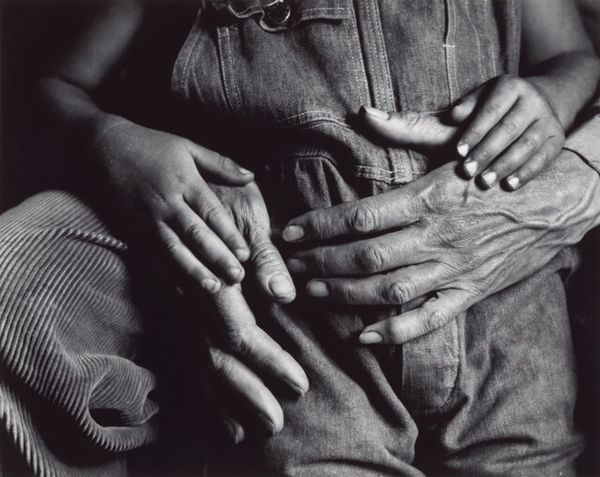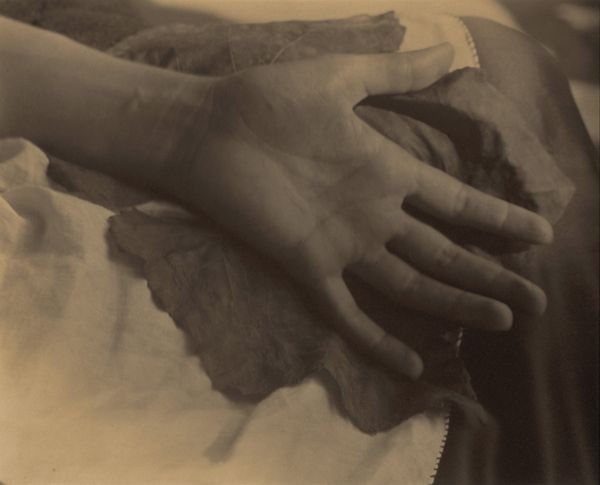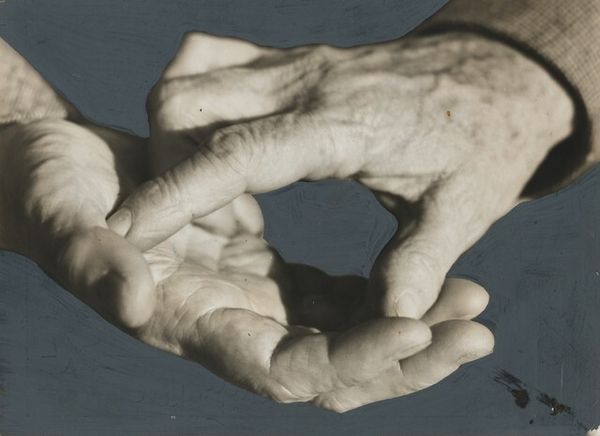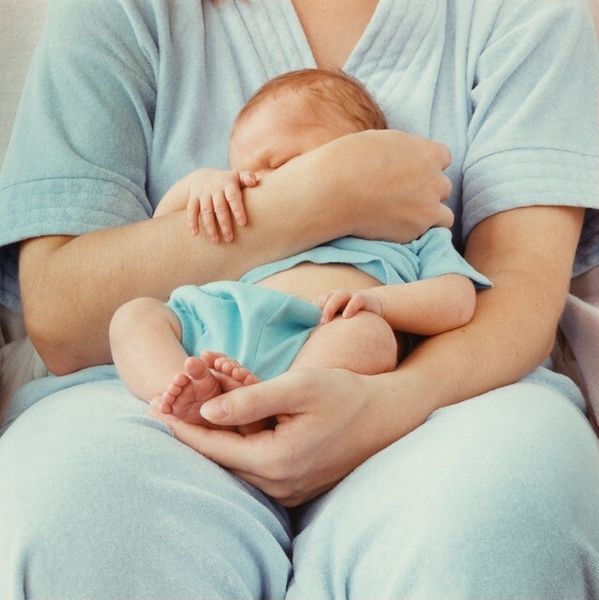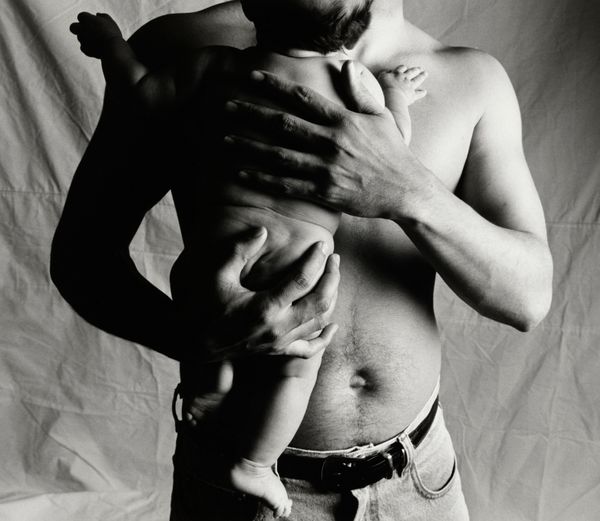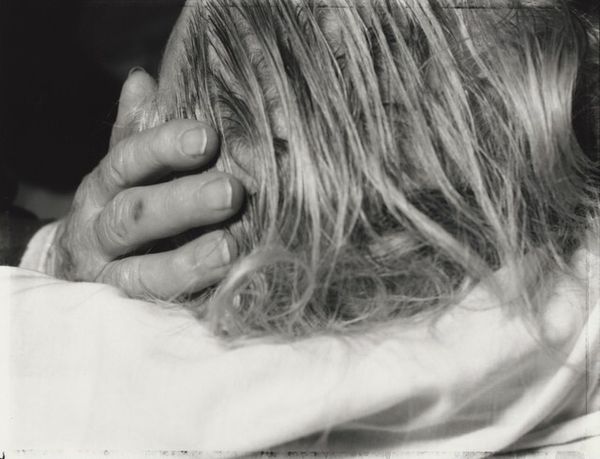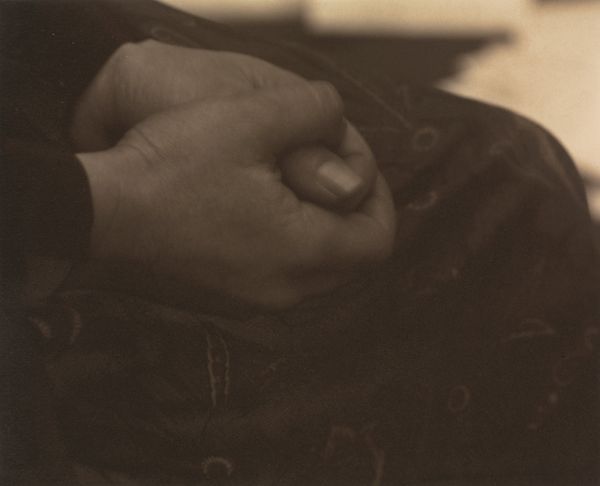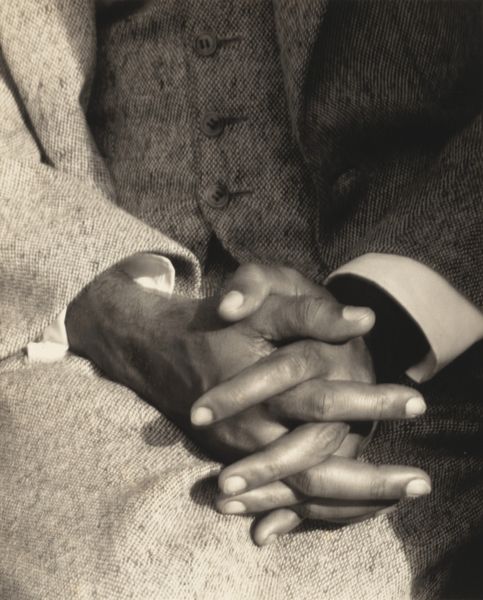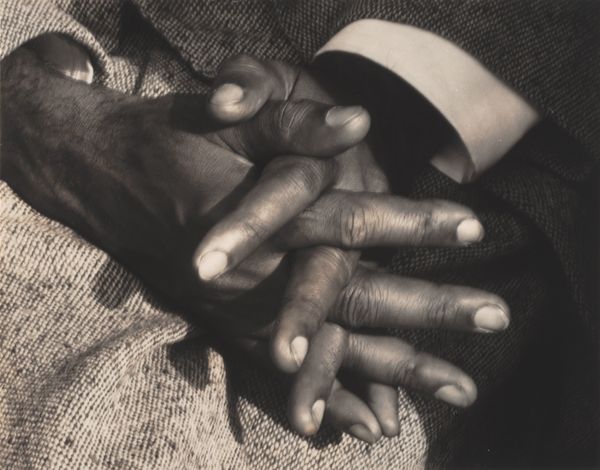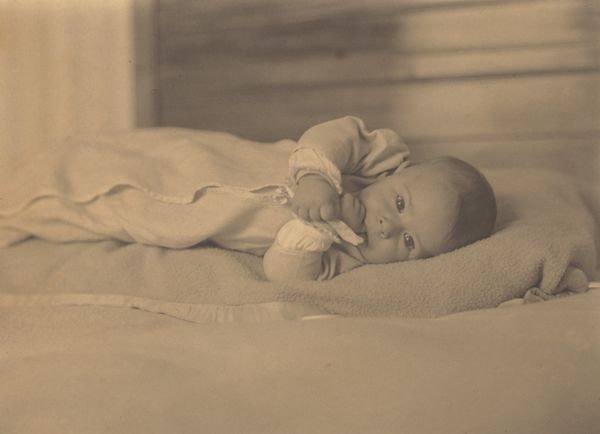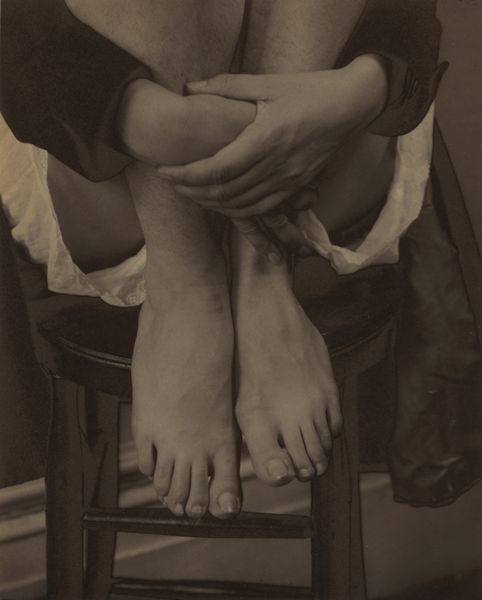
paper, photography
#
portrait
#
self-portrait
#
portrait image
#
pictorialism
#
paper
#
photography
#
united-states
#
modernism
Dimensions: 9.2 × 11.6 cm (image/paper/first mount); 33 × 27.5 cm (second mount)
Copyright: Public Domain
Curator: Here we have a black and white photograph by Alfred Stieglitz, titled "Georgia O'Keeffe," created in 1933. It's currently held in the collection of The Art Institute of Chicago. Editor: My first impression is one of vulnerability, of interiority. The muted tones create a quiet mood, and the close cropping focuses us entirely on these hands and arms. Curator: Stieglitz’s approach to photography in this period shows a movement towards pictorialism—notice the soft focus and the careful composition which create an atmosphere rich in subtle tones and light. The formal elements draw your eye directly to the intersection of hands and thighs. Editor: It certainly directs attention—these intertwined hands seem both restful and tense. What interests me is the very tangible materiality of this image; we see skin, fabric, even the paper grain itself contributes to the textural density. I wonder about the labor implied, both O'Keefe's labor and the technical work in developing the image, the artist's darkroom processes. Curator: An excellent point. The pose itself is carefully constructed. O'Keeffe’s clasped hands take on almost sculptural quality, their form enhanced by Stieglitz’s lens. Consider the negative space and how it defines the very form. We might decode the symbolism embedded in the hands. Editor: But is that all we can see? These details reveal an unromantic image of women's bodies at this time. Not a symbol but an index, reminding us of class, labor, even just of the passage of time. The photographic paper too, is this specific texture and its age all relevant material? Curator: These close-up details almost challenge traditional portraiture, blurring the lines between object and subject, between the body and sculptural abstraction. I see this not merely as documentation, but as Stieglitz’s careful elevation of his subject. Editor: Perhaps both interpretations coexist here. I appreciate how the photograph's intimacy urges us to consider it beyond a pure art object. I wonder what material processes are embedded here beyond the photographic process, reminding us, subtly, of the material realities of the people pictured. Curator: Precisely. This photograph remains a fascinating nexus of aesthetic form and powerful portraiture—a testament to the way images can evoke many points simultaneously. Editor: A worthwhile and productive divergence indeed, thank you.
Comments
No comments
Be the first to comment and join the conversation on the ultimate creative platform.

